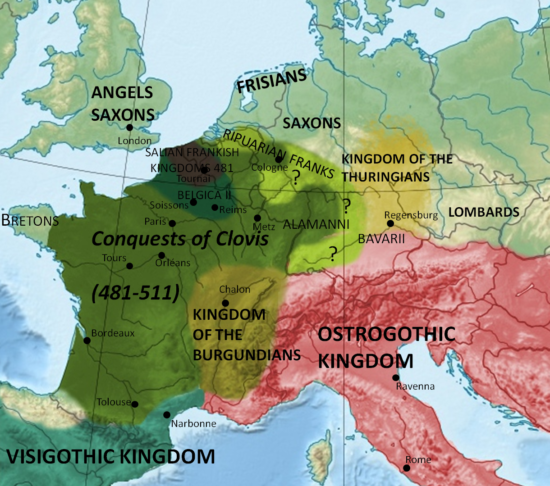Childhood
The city starts taking precautionary measures building a 9-meter-high battlement that protects the harbor & limits the city within its walls. After the reforms devised by Diocletian (Emperor from 284 to 305) & implemented around 314 by Constantine I (Emperor from 306 to 337) Roman Burdigala becomes capital once again, this time in one of the seven smaller provinces of Gaul, Aquitania Secunda.
In 407 the Vandals came again, ravaging the region until they departed for the Iberian Peninsula in 409 AD. In their attempt to overcome their military might, the Romans called forth another Germanic tribe as foederati, giving them as a reward the right to settle in Aquitania around Toulouse. The Visigoths occupied the area of Bordeaux from 414 until 507, when they were defeated by King Clovis I (Battle of Vouillé), who incorporated Burdigala into the Merovingian Kingdom of the Franks.



Frankish rule in their newly annexed territories of the south was feeble in the beginning as was for the Visigoths before them.


Aquitanians did not have much difficulty in resisting Frankish authority & although they didn’t establish themselves as a separate kingdom, their territory came to be distinguished as semi-autonomous, along with its neighboring Wasconia or Gascony, a region which was officially acknowledged as a duchy with Burdigala as its capital after 602 AD. The Duchy of Wasconia was partly established for the control of the Basques in Novempopulania or Aquitania III. The duchy extended initially on the lands south & around river Garonne, between Bordeaux & Toulouse.


Around 628 Aquitaine became the short-lived kingdom of Charibert II, son of Clotaire II King of the Franks & half-brother to Dagobert I who finally became the King of Franks & inherited the near-independent realm in 632 AD.



